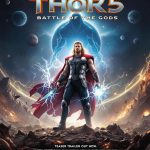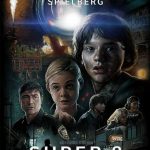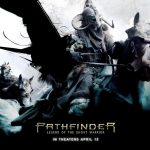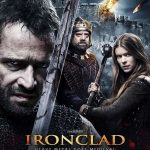Narnia (2010)

Released in 2010, The Chronicles of Narnia: The Voyage of the Dawn Treader is the third film adaptation of C.S. Lewis’s beloved fantasy series. Directed by Michael Apted and produced by Walden Media and 20th Century Fox, this film continues the journey of Lucy and Edmund Pevensie as they return to the magical land of Narnia alongside their annoying yet lovable cousin, Eustace Scrubb. Unlike the first two films, which followed the grand battles and larger-than-life characters of The Lion, the Witch and the Wardrobe and Prince Caspian, Dawn Treader offers a more introspective, episodic narrative.
Suggested videos for you:
Plot Overview
The story opens with Lucy and Edmund living with their aunt and uncle during World War II. Their elder siblings, Peter and Susan, are off in America, and both are struggling with feelings of insignificance and frustration. The film takes a surprising turn early on when Lucy, Edmund, and Eustace are sucked into a magical painting of a ship at sea, plunging them into Narnia. Reunited with their old friend, King Caspian (Ben Barnes), they embark on an adventure aboard the Dawn Treader, a majestic ship bound for the distant Eastern Seas.
Their mission is to find the seven lost lords of Narnia who were banished by Caspian’s tyrannical uncle, Miraz. As they venture from island to island, they encounter magical creatures, treacherous landscapes, and temptations that force each character to confront their own insecurities and desires.
Themes and Character Development
One of the film’s central themes is the internal battle between good and evil, as well as the struggles of self-identity. Lucy grapples with jealousy and self-worth, particularly feeling overshadowed by her older sister, Susan. At one point, she wishes to be as beautiful as Susan, but later learns that such desires would change her fundamentally, erasing her individuality. Edmund, too, faces his own challenges, haunted by his past betrayal in The Lion, the Witch and the Wardrobe. As he confronts a terrifying sea serpent later in the film, Edmund learns the importance of courage and loyalty.
The most complex transformation, however, is reserved for Eustace. Initially, Eustace is portrayed as a whiny, self-centered boy who doesn’t believe in magic and loathes his cousins. His transformation into a dragon, which symbolizes his inner greed and anger, serves as a powerful metaphor for his personal growth. Eustace’s journey to redemption and self-discovery is one of the most moving aspects of the film, highlighting themes of forgiveness and the ability to change.
Visuals and Special Effects
Visually, The Voyage of the Dawn Treader is a feast for the eyes. The production design brings the world of Narnia to life in stunning detail, with each island offering a new and unique environment. From the mysterious Lone Islands to the eerie Dark Island, the film captures the imagination with sweeping cinematography and beautifully crafted sets. The Dawn Treader itself, with its dragon-shaped prow and intricate design, is a testament to the production team’s commitment to faithfully adapting Lewis’s world.
The special effects in Dawn Treader received mixed reviews, as some sequences were visually captivating, while others suffered from dated CGI. Eustace’s dragon form, for example, is both majestic and somewhat clunky. The climactic battle with the sea serpent is thrilling, yet it feels slightly out of place given the film’s quieter, character-driven moments.
Strengths and Weaknesses
One of the film’s greatest strengths is its fidelity to the source material’s Christian allegorical themes. Aslan, voiced once again by Liam Neeson, embodies a guiding, almost divine presence that provides comfort and wisdom to the young characters. The film subtly explores spiritual themes such as faith, temptation, and redemption without being overly preachy, which appeals to both secular and religious audiences.
However, the film’s episodic structure is also one of its primary weaknesses. The Voyage of the Dawn Treader often feels disjointed, as it shifts from one island to the next with little cohesion. While the book’s episodic nature allows readers to savor each adventure, the film struggles to maintain a sense of momentum. As a result, some parts of the movie feel rushed, while others seem to drag, which ultimately impacts the pacing.
Additionally, the change in studios (from Disney to 20th Century Fox) and the switch in directors are evident in the film’s tone. Michael Apted’s direction brings a different flavor to the story, focusing more on character introspection than the grandiose, action-driven style of the previous films. This change may appeal to fans of the book but feels less cohesive as part of a film franchise that previously emphasized epic battles and sweeping scale.
Reception and Legacy
The Voyage of the Dawn Treader received mixed reviews upon its release. Critics praised the film’s faithfulness to its themes and the strong performances of its cast, particularly Will Poulter as Eustace Scrubb. Poulter’s performance was widely lauded, and he brought depth and humor to a character that could have easily been one-dimensional. However, some critics and audiences felt that the film lacked the energy and scale of its predecessors.
The film was moderately successful at the box office, grossing approximately $415 million worldwide, but it didn’t reach the same heights as the first Narnia film. The mixed reception, combined with moderate financial success, led to a halt in further Narnia adaptations for several years.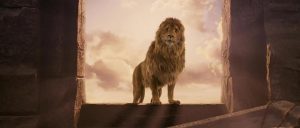
Conclusion
The Chronicles of Narnia: The Voyage of the Dawn Treader is a visually stunning, introspective installment in the Narnia series that provides valuable lessons on courage, self-worth, and transformation. While it may not capture the high-energy spectacle of its predecessors, it offers a meaningful story for fans of C.S. Lewis’s work, as well as younger audiences. Despite its flaws, it remains an admirable attempt to bring one of literature’s beloved tales to life and has become an important piece in the larger Narnia cinematic universe. Fans of character-driven fantasy and adventure will likely appreciate the film’s quieter moments, while others may find it lacks the dynamism that defined the series’ earlier entries.

